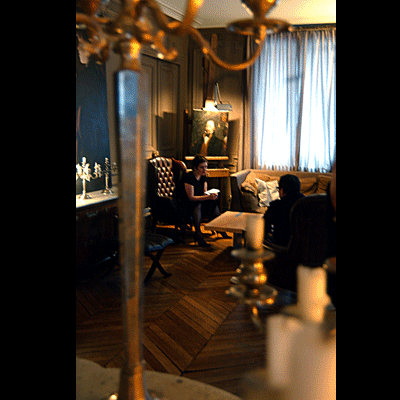

For a boy
born in Chinese Turkistan, where his parents landed during Mao’s Great
Leap, and who first tried his skills on propaganda paintings at the age
of 11, it has been a strange journey. From the Silk Road to the Avenue Montaigne,
from Soviet Realism to classical painting, from the Cultural Revolution
to the avid, amorous, unyielding re-appropriation of humanity’s cultural
heritage, of which his gigantic nation was long deprived…
“Back home, there were no Western paintings”, explains Yin Xin.
“Only bad photographic reproductions in black and white. When I first
saw a picture by Georges de La Tour, I felt the same shock you feel in front
of a woman whom you have loved for a long time from afar. At last, she is
there.” Ever since that day, Yin Xin has been seducing her…
And she’s with him, in his living room: a La Tour maiden, in the Chinese
version.
When he is asked whether
this re-appropriation of Western tradition isn’t part of China’s
formidable will to conquer the world, Yin Xin protests: “Many artists
have inspired themselves from past masters! First I copied them to learn
their techniques, then I found my own style.” Today, Yin Xin works
directly on ancient paintings found in flea markets, which he restores and
transforms into palimpsests, replacing church towers with pagodas and frock
coats with brocade robes. A series of fake-real antiques – the exact
opposite of the seemingly 2000 year old teapot Yin Xin bought in Beijing,
which he laughingly admits is certainly artificially aged…
“Metamorphoses” will, fittingly, be the title of his next exhibition
at the Shanghai Art Museum in December – in a country where Yin Xin
feels as much a stranger now, than he does in Paris. Irreparably cross-bred,
as is all contemporary beauty.
Contact: paris@yinxin.org
Portrait
Denyse Beaulieu / photos: Catherine Thiry
|
|
|
|
|
||